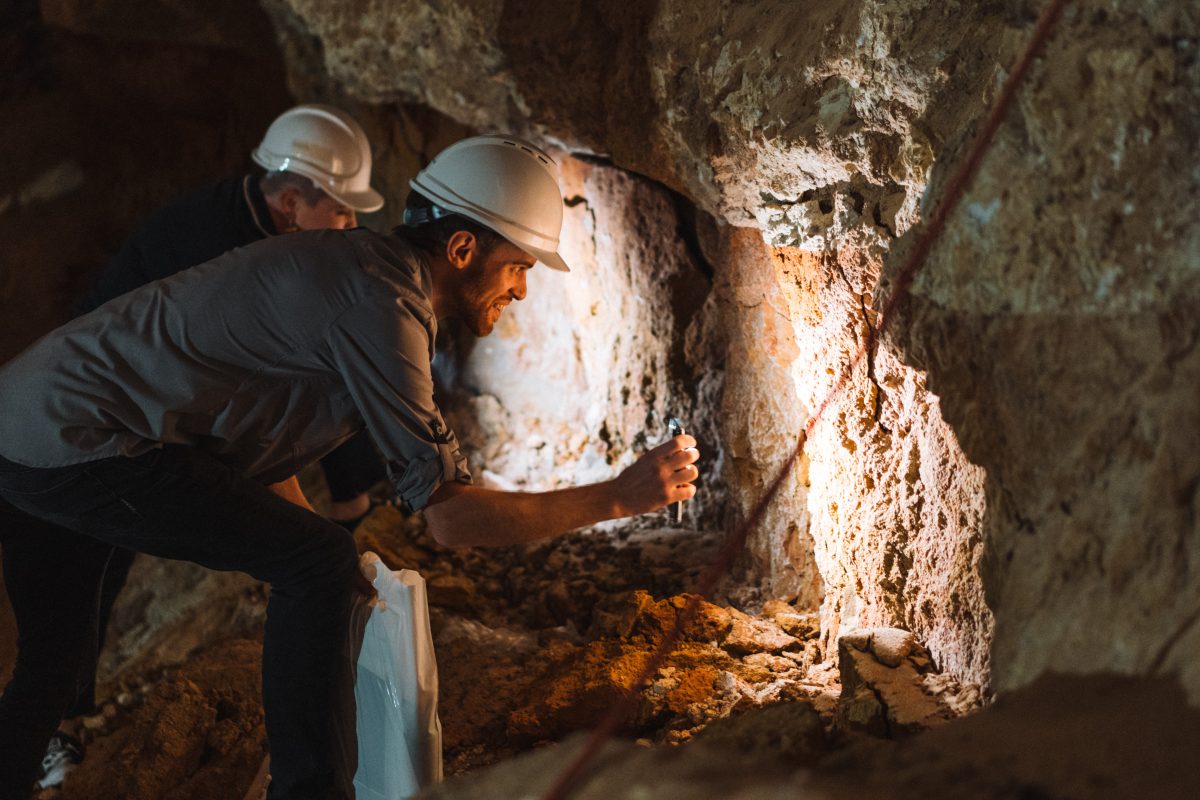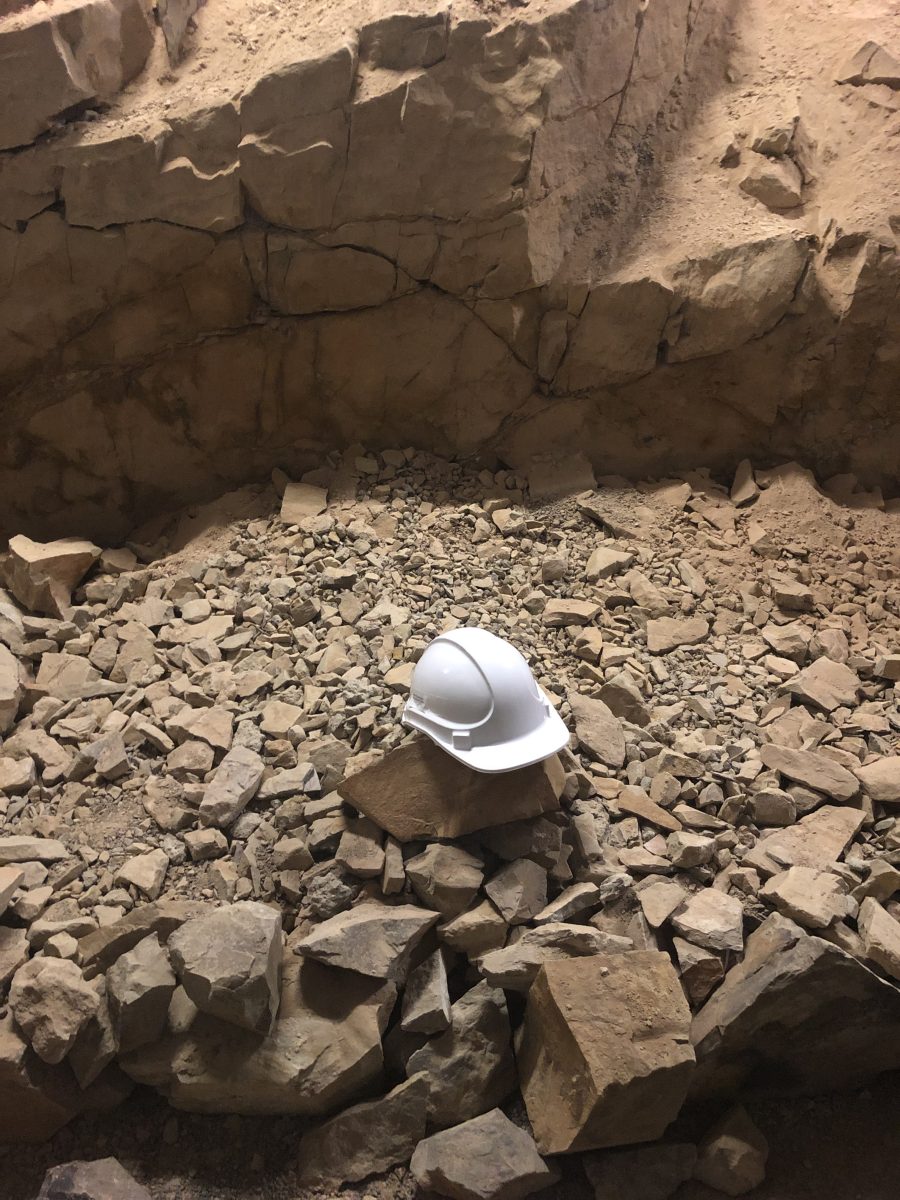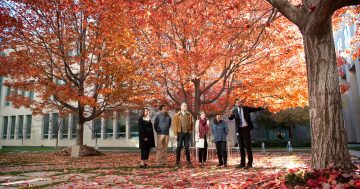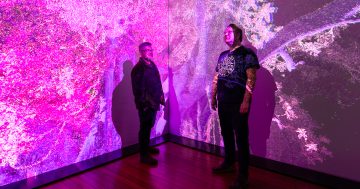
Verity Normington and Joe Fayle from Geoscience Australia explore the unconformity under Parliament House during the Enlighten festival last year. Photo: Department of Parliamentary Services.
There’s a whole other world under Parliament House in Canberra, a world that dates back millions of years that only very rarely is revealed to the public.
Known as the geological phenomenon “unconformity”, it’s an ancient rock formation located directly under the House of Representatives at Parliament House – and next month members of the public will be able to venture down there to see the rarity for themselves.
Described as being like a “puzzle piece”, an unconformity is a geological formation where two rock masses, made millions of years apart, fuse. For those who see it, it’s a rare opportunity to “read the rocks”, layer by layer, to piece together the history of how this land was at that time.
In the case of Parliament House, it’s built on a solid foundation of ancient rocks, mainly sandstone and silt stones, formed 430 million years ago in a sea that covered large parts of south-eastern Australia.
For Acting Assistant Director of Public Programs, in the Department of Parliamentary Services, Catherine Roach, it’s simply a marvel – a phenomenon that sheds light on understanding the earth as it was millions of years ago – and next month will be one of those rare times when members of the public can see it for themselves.
To mark National Science Week, special tours will take visitors underground at Parliament House to show what the rock formations mean and how they illustrate the history of the area, thanks to the fossils found in them.
“By being able to go down there, visitors can embrace and celebrate this building, the craftsmanship that went into its creation … all the 10,000 people who worked on this building in some way over the eight years of construction,” Ms Roach said.
“One of the reasons I love this tour is because this incredible phenomenon of nature is sitting just under us here,” she said.
“It gives you an extraordinary insight into the process of building – and it’s super fun.
“I’ve done the tour a few times and always enjoy it. The phenomenon of unconformity is just amazing.
“Can you imagine the idea of going back 430 million years, it’s such an exciting thought to be able to connect with this land and the geology of the area.”
Ms Roach said fans of natural phenomena like the unconformity could thank a helpful former Parliament House security guard and a curious academic.
“Dr Wolf Mayer, who was a geologist from the ANU, was talking to a security guard here one day about the rock formation under the building. The security guard asked if he’d like to have a look and Dr Mayer went underground … and discovered it.”
(Dr Mayer has since written a book about the phenomenon called Images in Stone: A guide to the building stones of Parliament House.)

A close-up of some of the rock formations under Parliament House. (Hard hat to show size comparison) Photo: Sally Hopman.
Dr Mayer described it in his book as ancient history versus modern history because of how they sat on top of each other.
Ms Roach said although the tours were popular, they were held only on special occasions, like the upcoming National Science Week because the area is small.
Special guests have been invited to explore the underground area over the years, from parliamentarians to scientists to students, but because of changes in security issues, the official tours now only run twice a year.
Ms Roach, who said she’s been lucky enough to do the tour a number of times, said it was remarkable to see other people’s reaction the first time they went underground.
“It is wonderful to see people when their eyes actually light up after seeing this,” she said.
“It’s not for everyone because the space is quite limited and tight, slightly dusty and not all smooth marble to walk on all the time.
“But if you have a sense of adventure, you’ll love it,” she said. “We recommend over-14s because it is not a play area, it’s more a listen and learn time.”
The Uniformity Geology tours run during National Science Week 2024 on August 9, 10, 16 and 17. Bookings essential.
Original Article published by Sally Hopman on Riotact.



